I have a personal connection to the country’s rich culinary heritage of Vietnamese, including its delicious desserts. Vietnamese desserts are a unique and diverse category of sweets that offer a variety of flavors and textures.
From traditional Che and Banh to modern creations like Banh Mi Kem and Macarons with Vietnamese flavors, there is something for everyone to enjoy. These desserts not only taste amazing but also have cultural significance and history, making them a fascinating aspect of Vietnamese cuisine.
What are Vietnamese desserts?
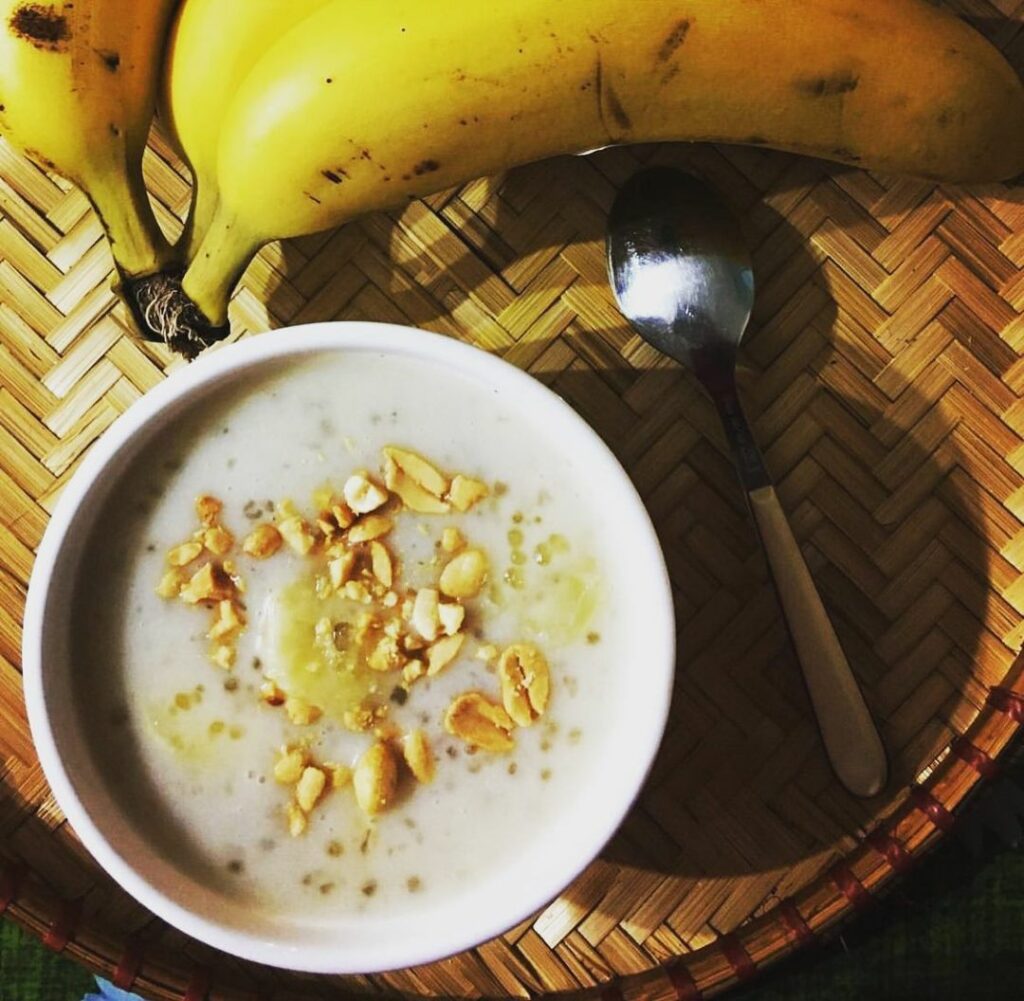
Vietnamese desserts are a diverse range of sweet treats that have been enjoyed in Vietnam for centuries. These desserts are characterized by their use of local ingredients, such as rice, coconut milk, and tropical fruits, as well as unique flavor combinations and presentation styles.
Exploring Vietnamese desserts is worth it because they offer a window into Vietnamese culture and history. Desserts in Vietnam have been influenced by various cultures and cuisines, such as Chinese, French, and Thai, resulting in a fusion of flavors and techniques. Additionally, many Vietnamese desserts have cultural significance and are often served during special occasions, such as Lunar New Year and weddings.
Vietnamese desserts are a delicious and fascinating part of Vietnamese cuisine that offers a unique and flavorful experience.
The Culture and Customs of Vietnamese Desserts
Desserts play an important role in Vietnamese culture and society. They are often served as a symbol of hospitality and are an integral part of celebrations and special occasions. Here are some key aspects of the culture and customs of Vietnamese desserts:
The role of desserts in Vietnamese culture and society
In Vietnam, desserts are often seen as a way to express hospitality and generosity. It is common for hosts to offer their guests a sweet treat at the end of a meal or during social gatherings.
Desserts also hold cultural significance and are often served during important events, such as weddings, birthdays, and religious holidays.
Desserts for special occasions and celebrations
Vietnamese desserts vary depending on the occasion and region. For example, during Tet (Lunar New Year), it is common to serve Banh Chung (sticky rice cake with mung bean and pork filling) and Mut (preserved candied fruits).
Desserts are an important part of Vietnamese culture and traditions. They offer a glimpse into the country’s history and hospitality and are a delicious way to experience Vietnamese cuisine.
What is the top list of Vietnamese desserts?
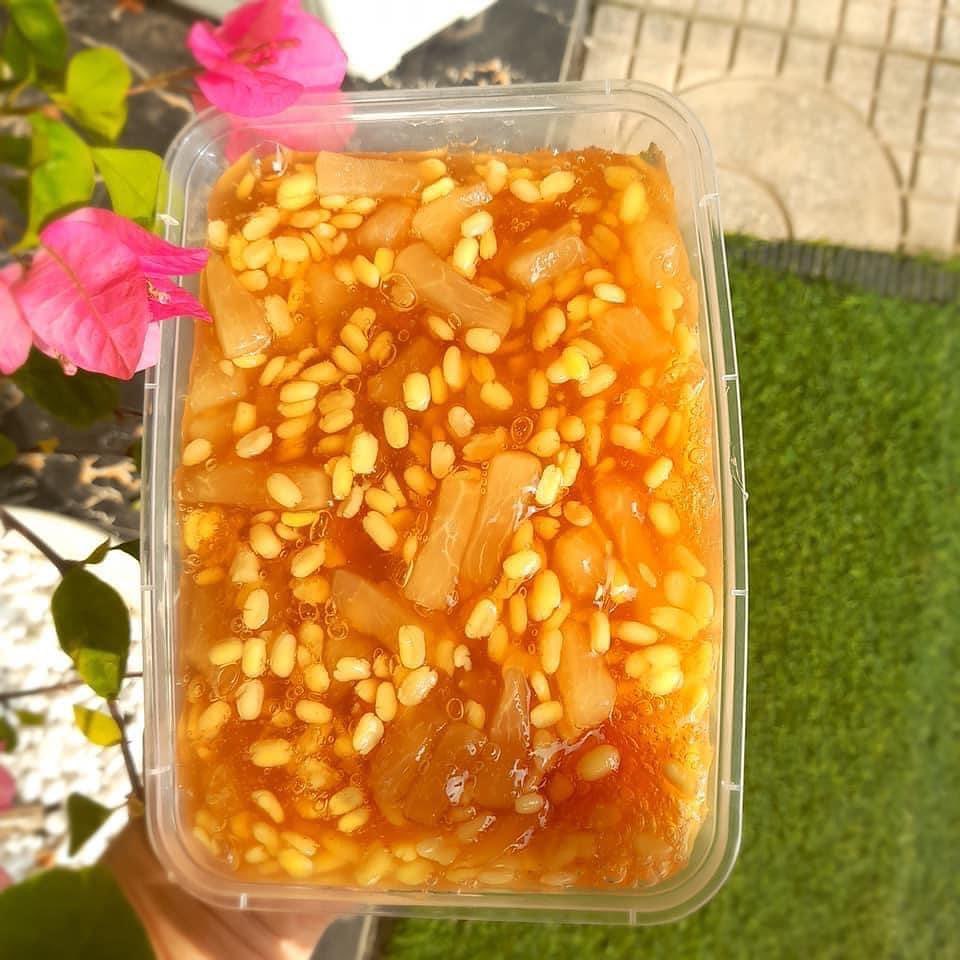
If you’re a foodie with a sweet tooth, then you might be curious about the different categories of Vietnamese desserts. Vietnam has a rich and diverse culinary heritage, and its desserts are no exception. From creamy coconut-based desserts to colorful fruit cocktails, Vietnamese desserts are a delicious and fascinating part of the country’s cuisine.
To help you explore this world of sweet treats, we’ve put together a list of Vietnamese desserts that are worth trying. This comprehensive list covers traditional, modern, and regional Vietnamese desserts, as well as healthy and vegan options. So, whether you’re a seasoned foodie or just looking to try something new, this list of Vietnamese desserts has got you covered.
Traditional Vietnamese desserts
Traditional Vietnamese desserts are an important part of Vietnamese cuisine, with a rich history and unique flavors. Here are some of the most popular traditional Vietnamese desserts:
Che Ba Mau (Vietnamese Three Color Dessert)
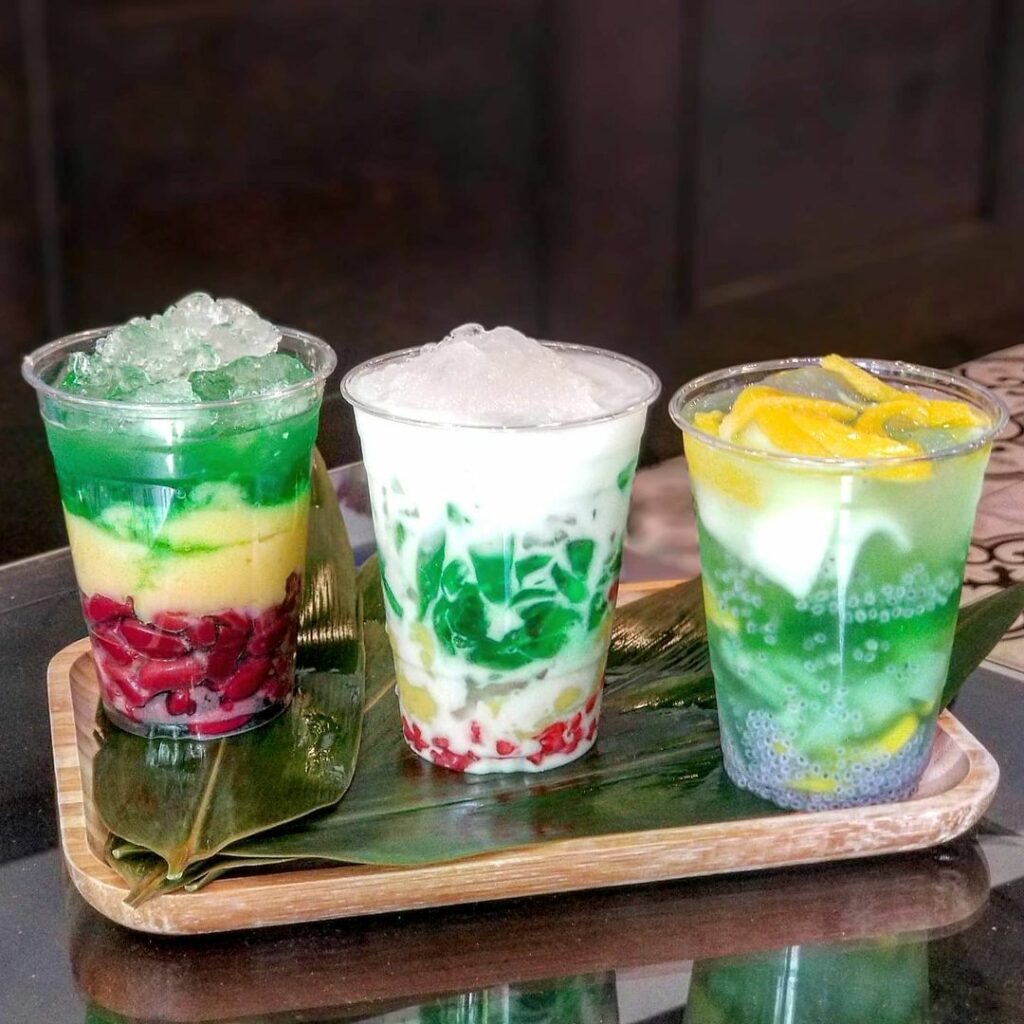
Three-color sweet bean dessert – a cold dessert made with sweetened beans (red bean, green bean, and yellow mung bean) topped with coconut cream, and served with ice. It has a sweet, creamy, and refreshing taste.
Banh Cam (Vietnamese Sesame Balls)
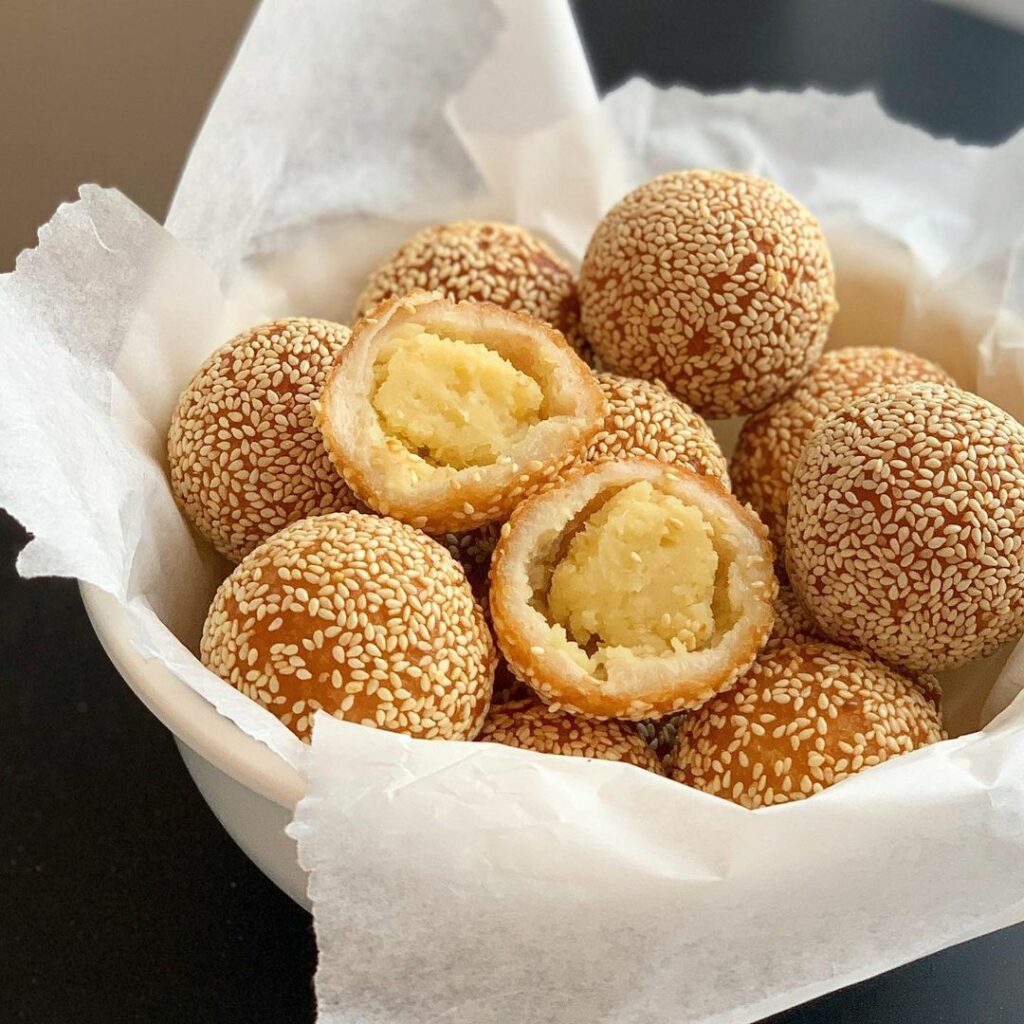
Deep-fried glutinous rice balls filled with sweet mung bean paste – crispy outside with a soft and chewy inside, filled with sweet mung bean paste. It has a sweet, nutty, and slightly savory taste.
Che Troi Nuoc (Vietnamese Glutinous Rice Balls in Ginger Syrup)
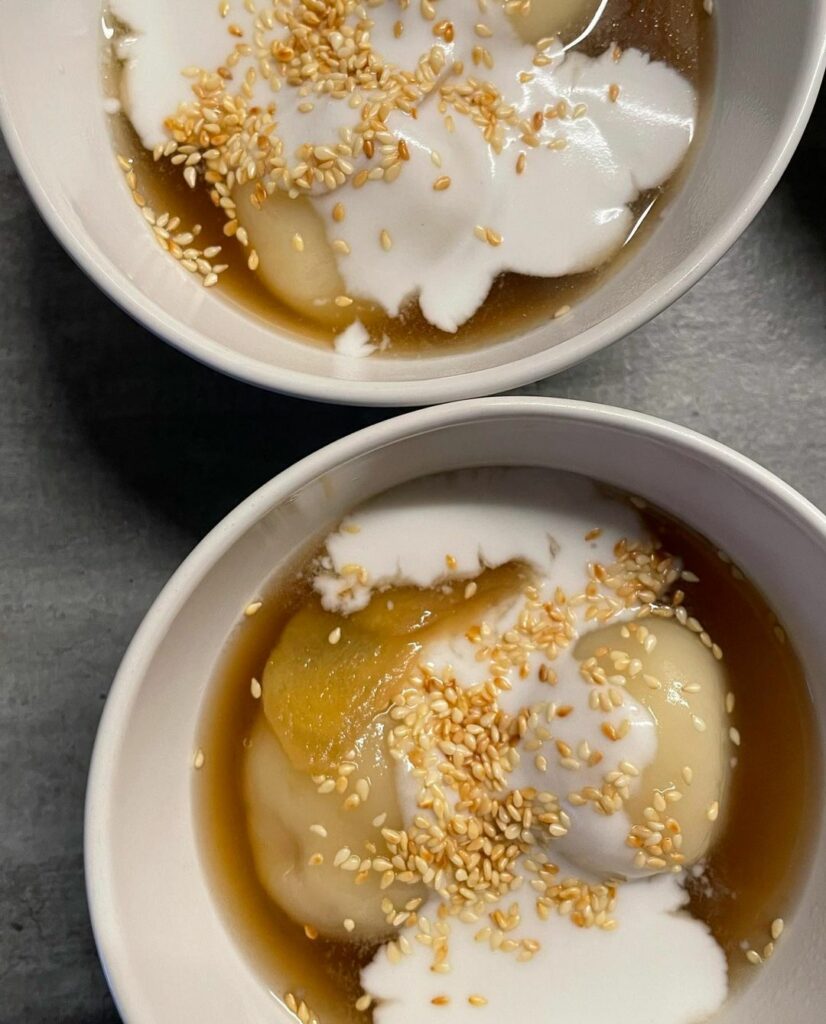
Glutinous rice balls in chopped ginger – small balls made of glutinous rice flour filled with sweetened mung bean paste and served in warm ginger syrup. It has a sweet and spicy taste.
Banh Bo (Vietnamese honeycomb cake)
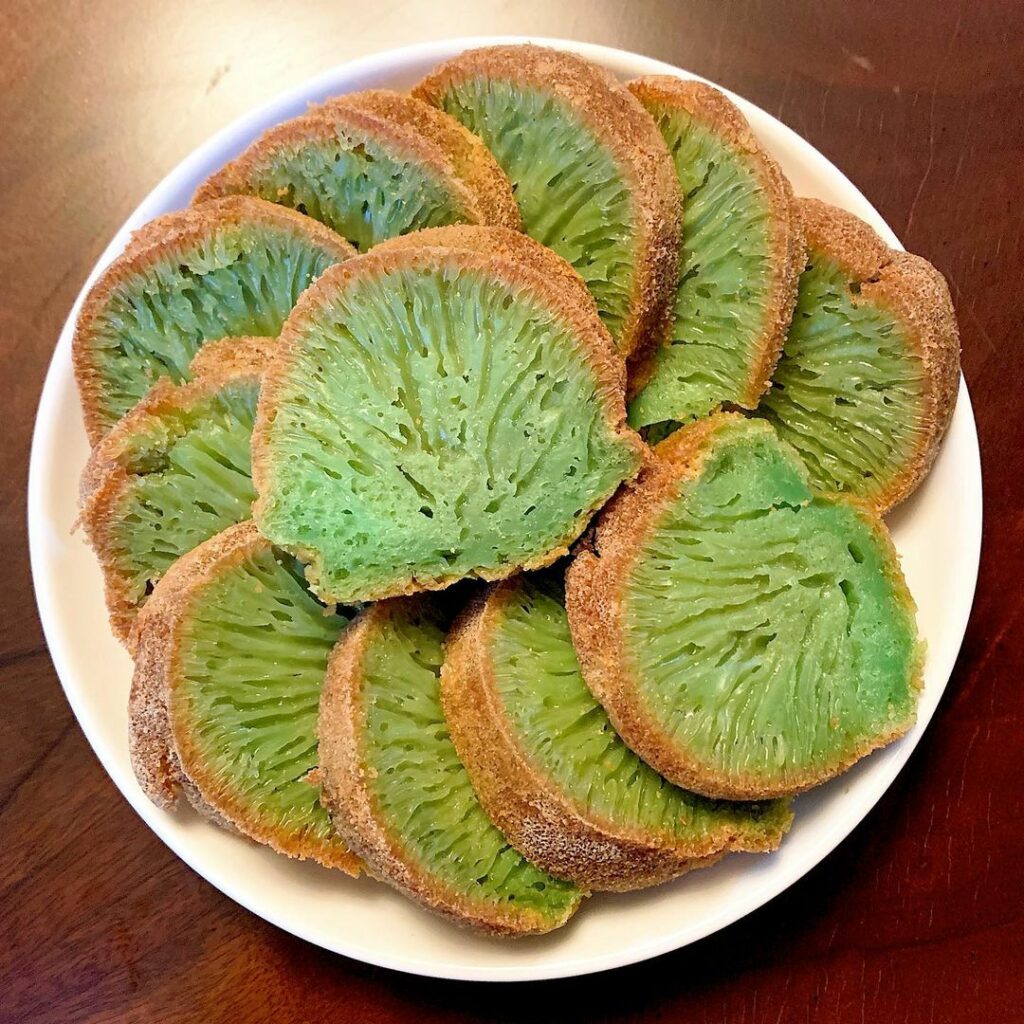
Vietnamese honeycomb cake – a soft and spongy cake made of rice flour, sugar, and yeast. It has a mildly sweet taste and a slightly chewy texture.
Che Chuoi (Vietnamese Banana, Coconut & Tapioca Dessert)
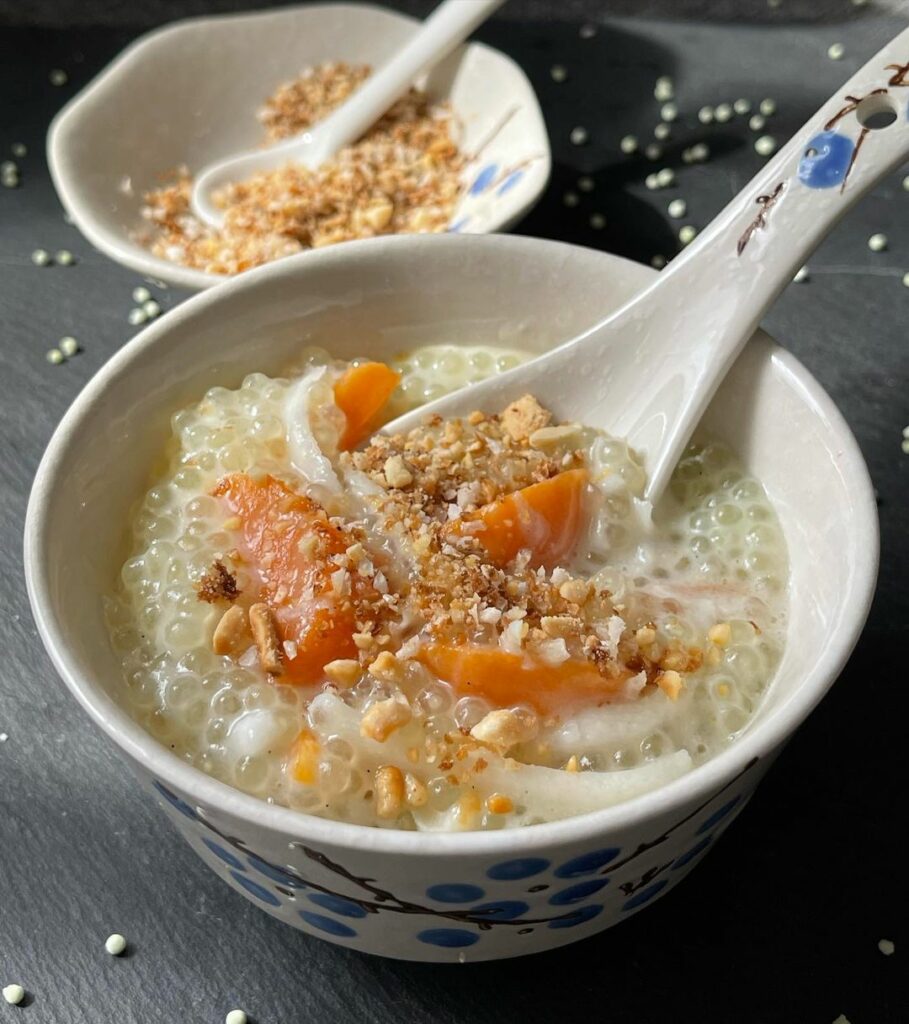
Banana and coconut milk dessert – a warm dessert made of ripe bananas cooked in coconut milk and sugar. It has a creamy, sweet, and slightly banana flavor.
Banh Tet (Sticky Rice and Mung Bean Cakes)
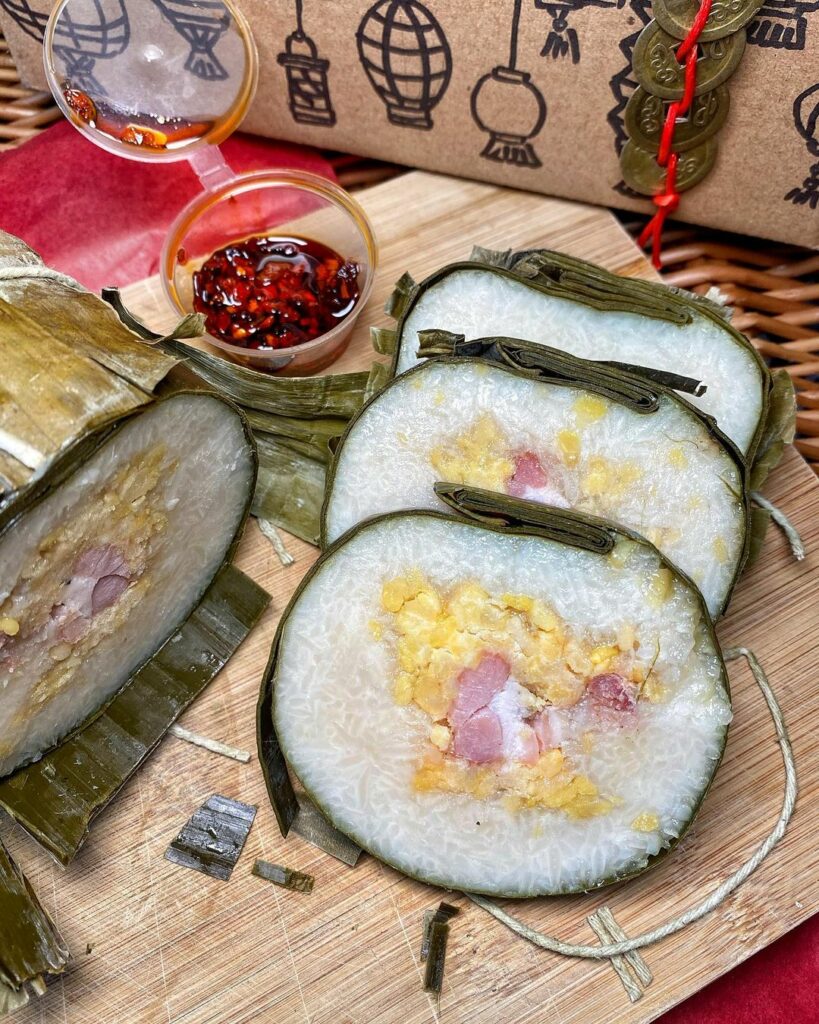
Sticky rice cake – a cylindrical cake made of glutinous rice and filled with mung bean paste and pork belly. It has a savory and slightly sweet taste.
Che Khoai Mon (Taro pudding)
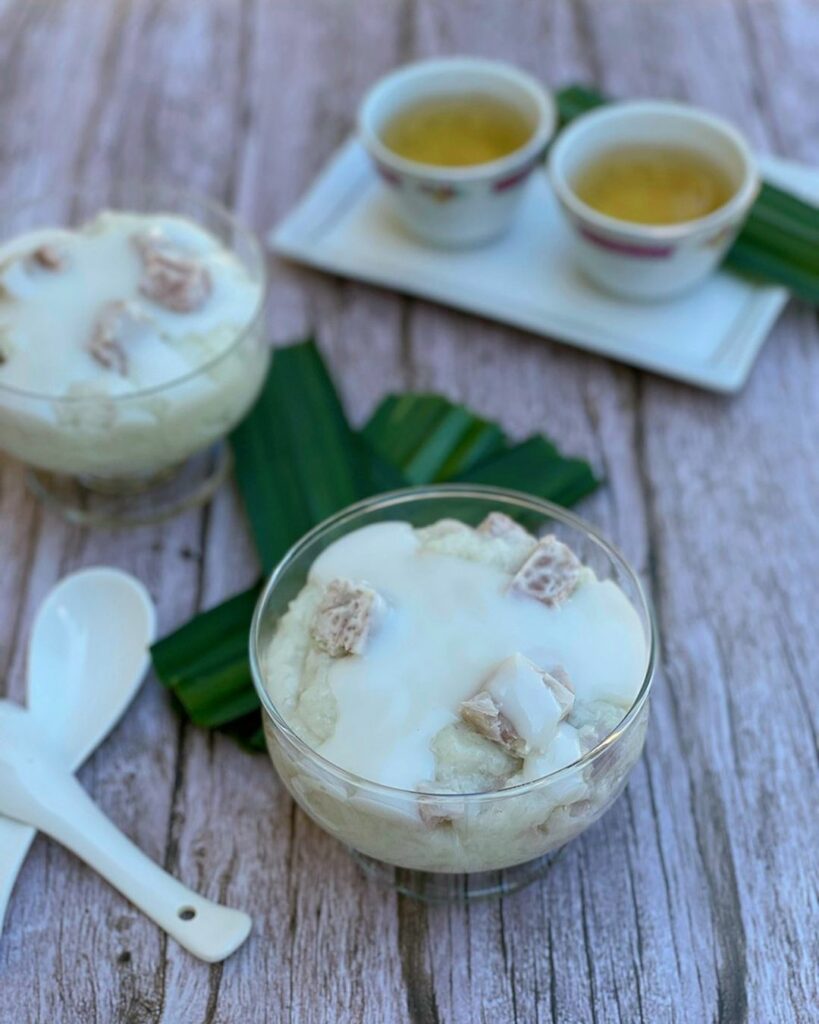
Taro sweet soup – a warm soup made with taro, coconut milk, and sugar. It has a creamy and slightly nutty taste.
Che Buoi (Vietnamese pomelo sweet soup)
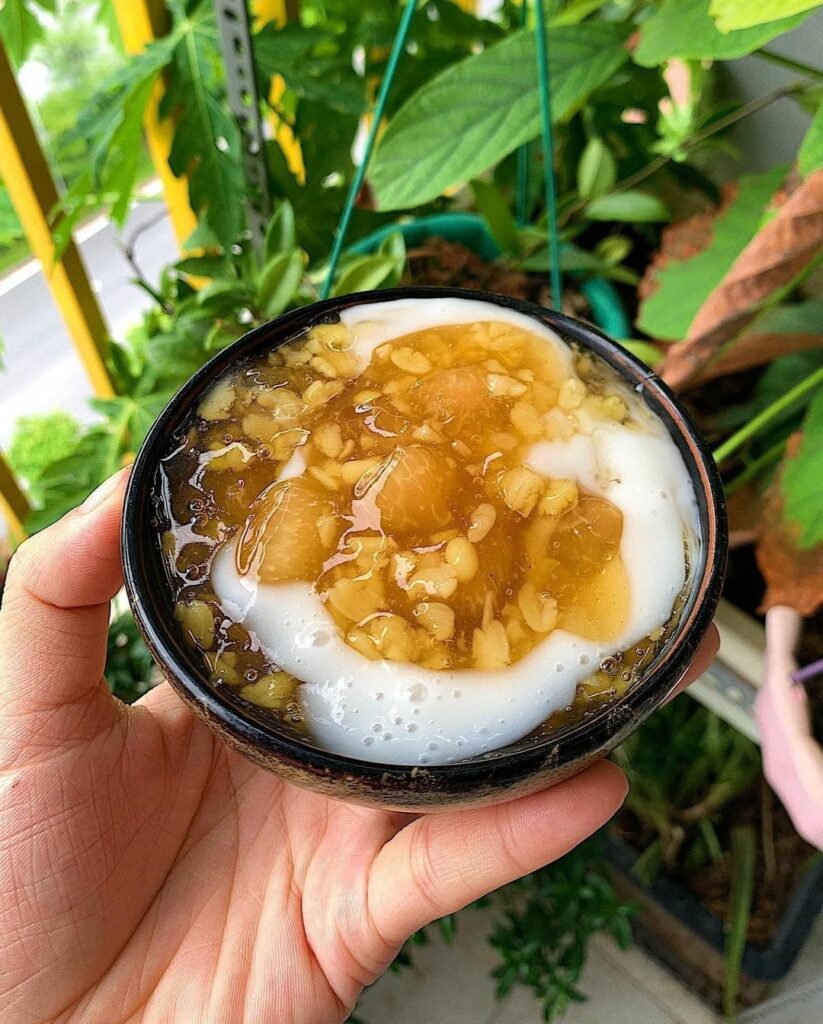
Che buoi is a refreshing dessert made from grapefruit, coconut milk, and tapioca pearls. It is a popular dessert during the hot summer months in Vietnam.
Che Bap (Vietnamese Sweet Corn Pudding)
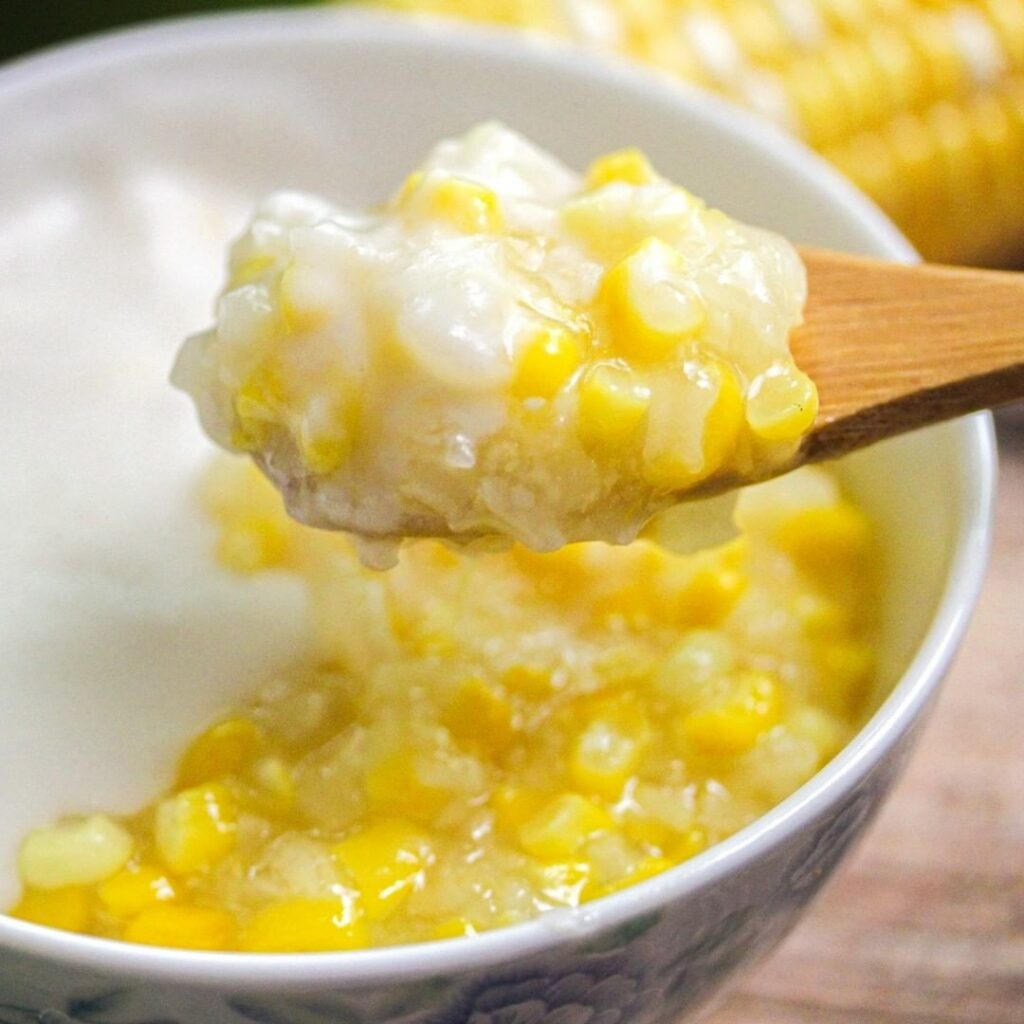
Sweet corn pudding – a sweet dessert made with sweet corn kernels cooked in coconut milk and sugar. It has a creamy, sweet, and slightly corn flavor.
Banh Chuoi Hap (Steamed banana cake)
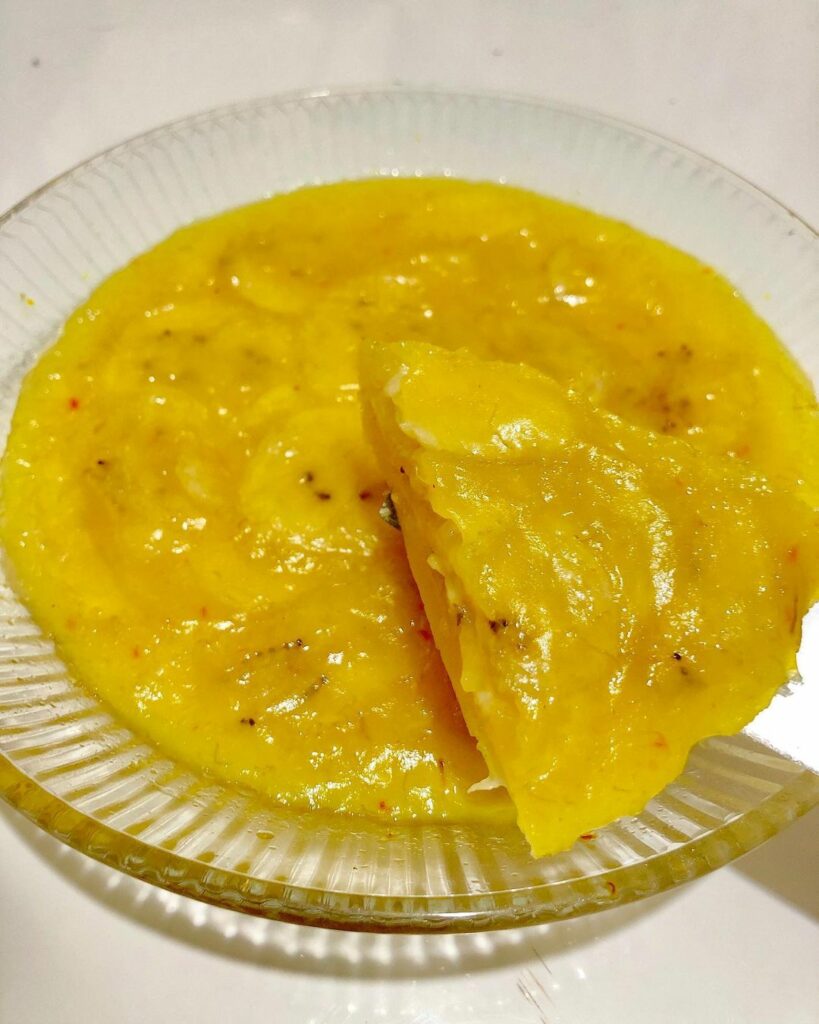
Banh Chuoi Hap is a steamed banana cake that is a popular snack and dessert in Vietnam. It is made from mashed bananas, rice flour, and coconut milk and is often topped with sesame seeds.
Che Dau Xanh (Mung Bean Dessert)
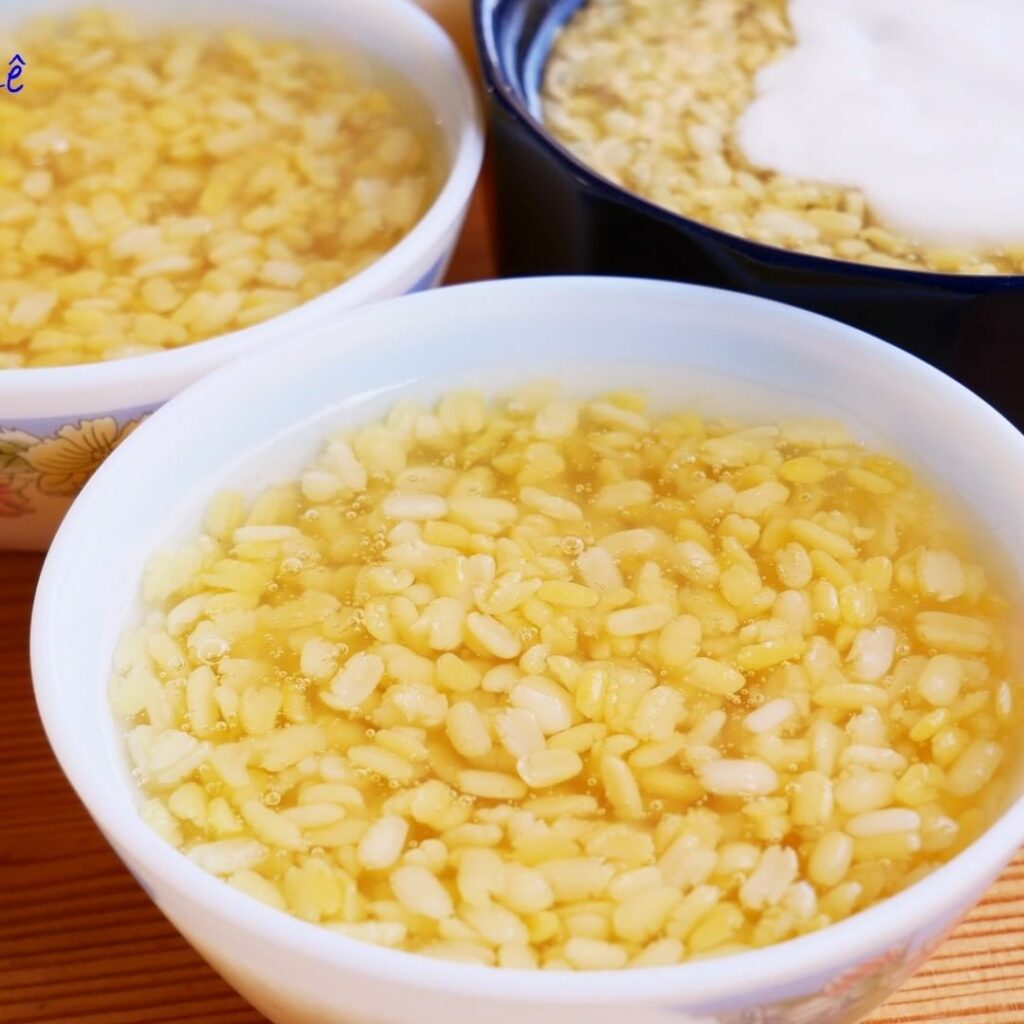
Sweet mung bean soup – a warm soup made with sweetened mung beans and coconut milk. It has a creamy and slightly nutty taste.
Che Thai (Vietnamese Fruit Cocktail)
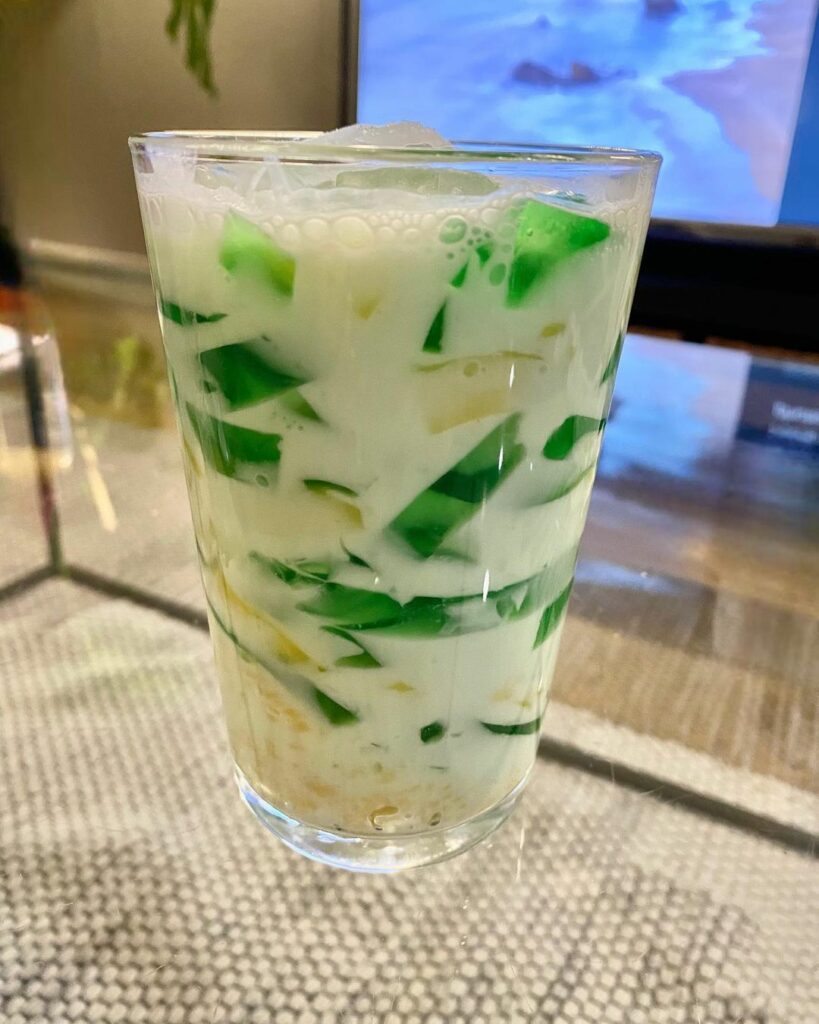
A colorful dessert made with mixed fruits, coconut milk, and syrup. Common ingredients include jackfruit, lychee, longan, tapioca pearls, and durian.
Che Hat Sen (Lotus Seeds Sweet Soup)
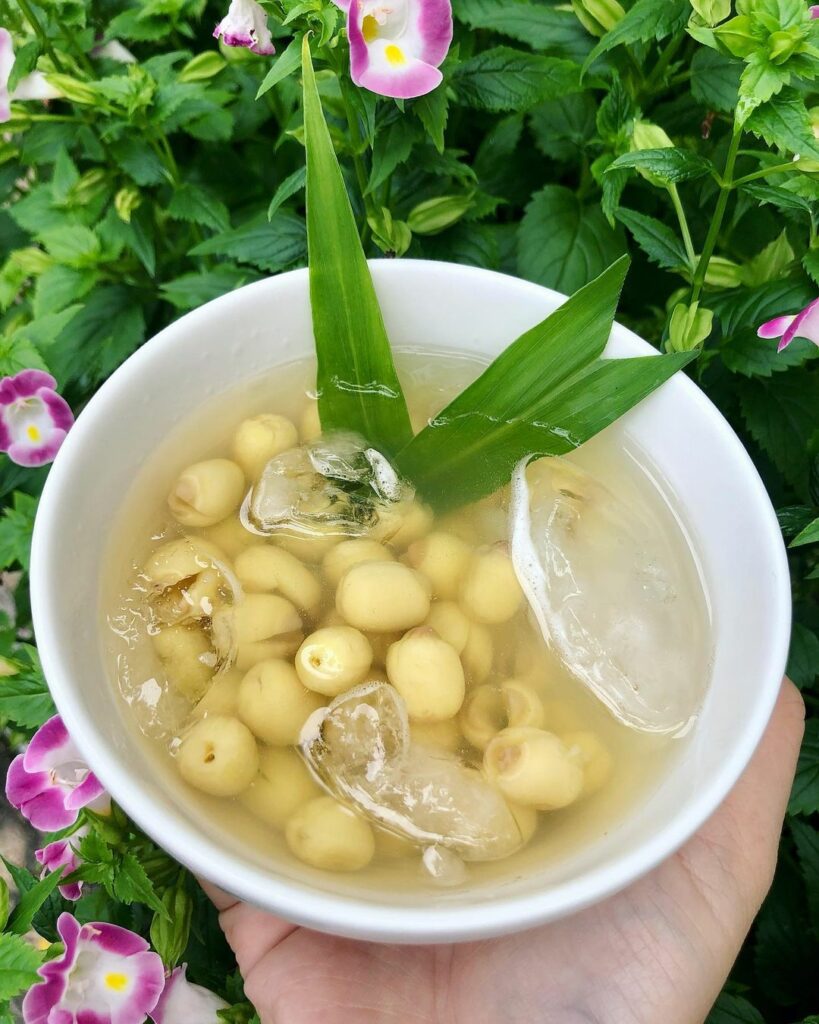
Lotus seed sweet soup – a warm soup made with lotus seeds, rock sugar, and coconut milk. It has a creamy and slightly floral taste.
Banh Tieu (Vietnamese Donuts)
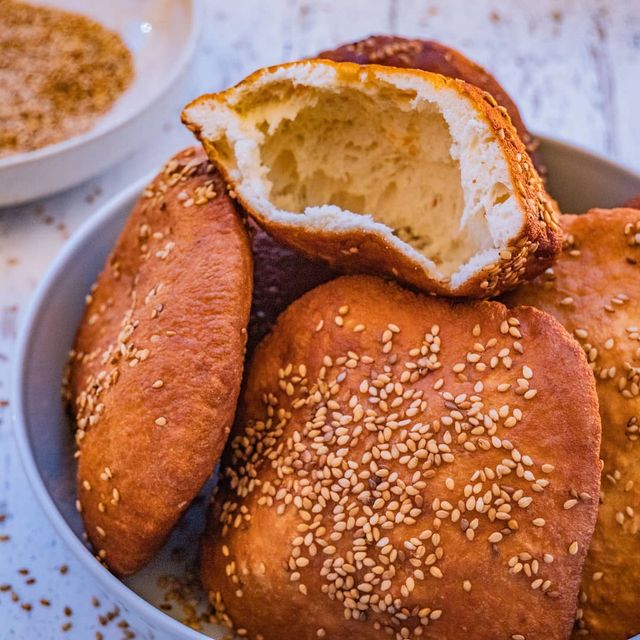
Fried doughnuts made with rice flour and sesame. It has a light and fluffy texture with a slightly sweet taste.
Che Ba Ba (Vietnamese sweet soup dessert)
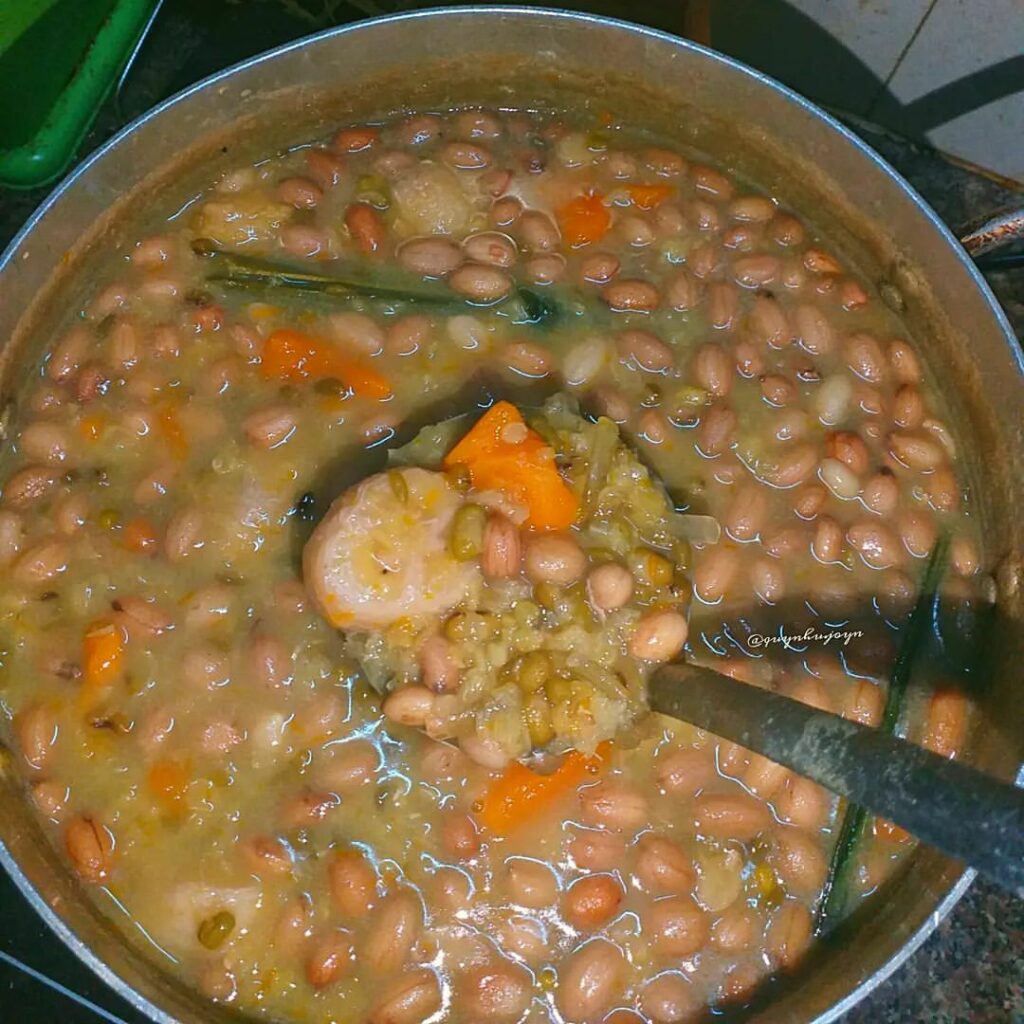
Sweet potato, cassava, and taro in coconut milk dessert – a warm dessert made with sweet potatoes, cassava, taro, and coconut milk. It has a creamy and slightly starchy taste.
Banh It La Gai (Gai Leaf Little Cake)
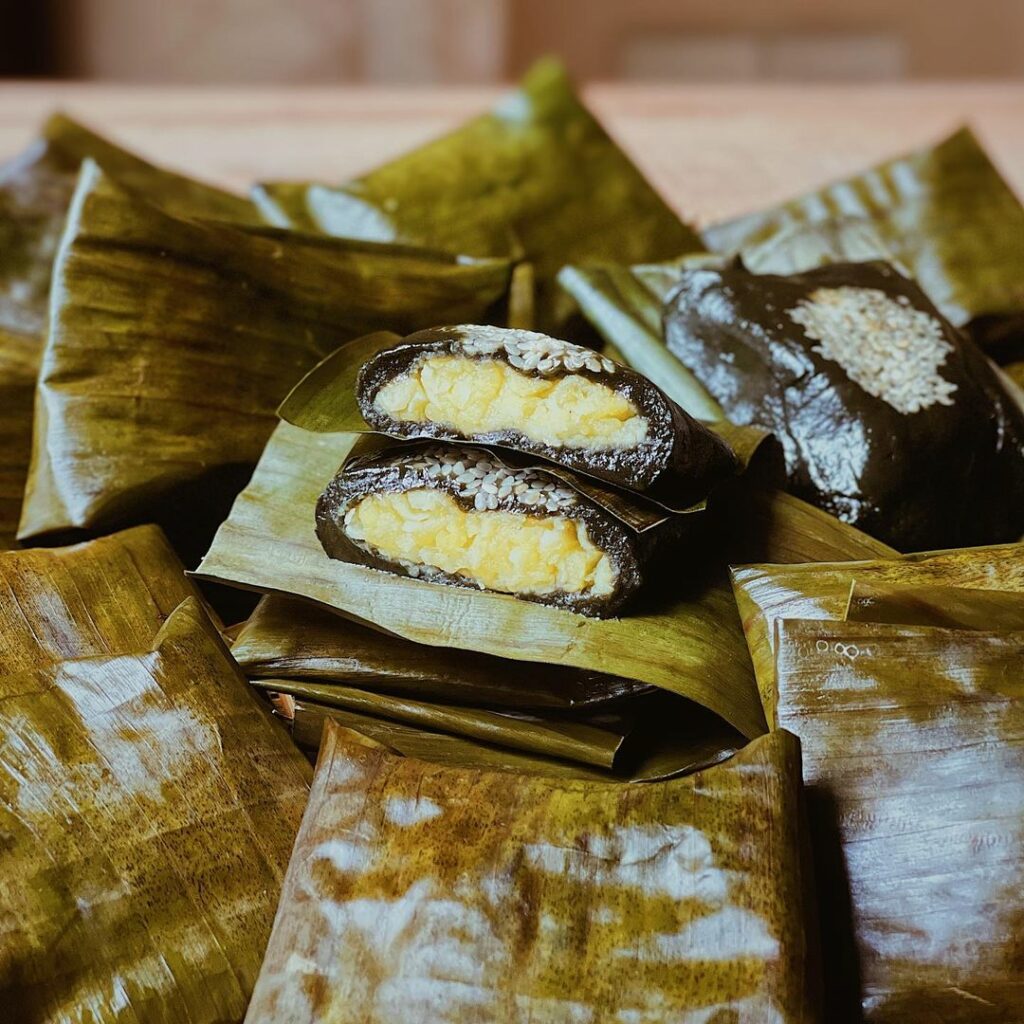
A dessert made with glutinous rice flour and filled with sweet mung bean paste, coated with pandan leaf powder. It has a sweet and earthy taste with a chewy texture.
Modern Vietnamese desserts
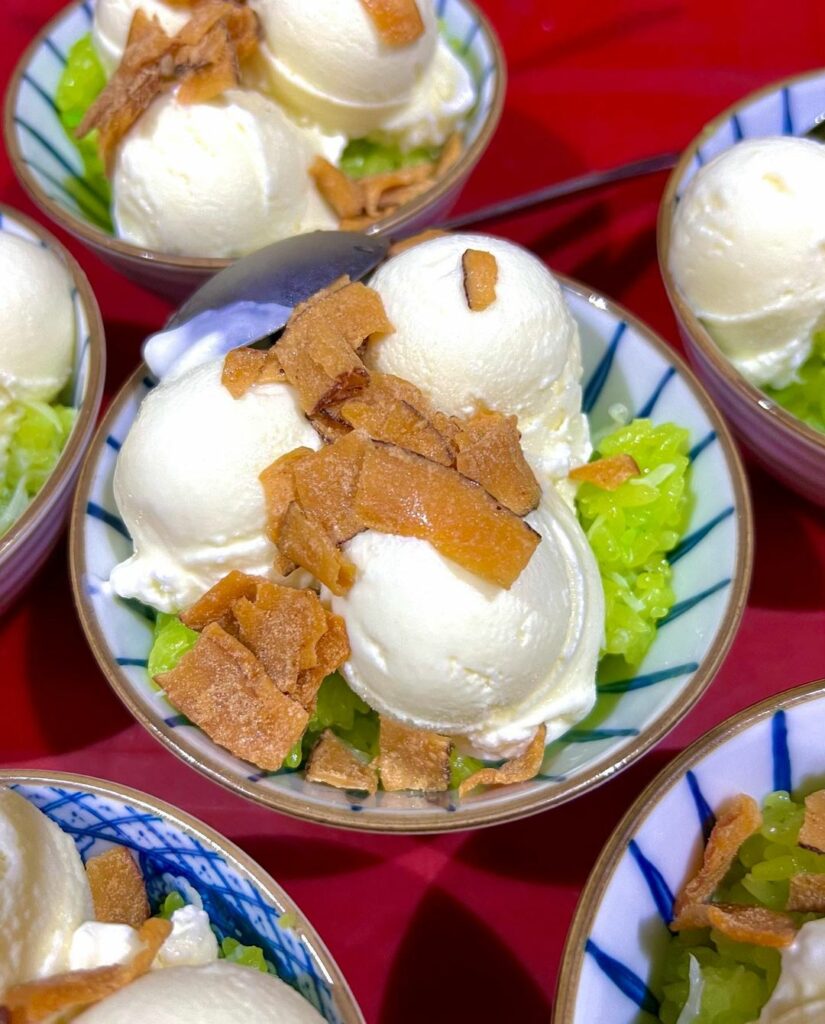
In recent years, modern Vietnamese desserts have been gaining popularity both in Vietnam and around the world. These desserts often combine traditional Vietnamese ingredients with contemporary techniques and flavors. Here are some popular modern Vietnamese desserts:
Banh mi kem (Baguette filled with ice cream)
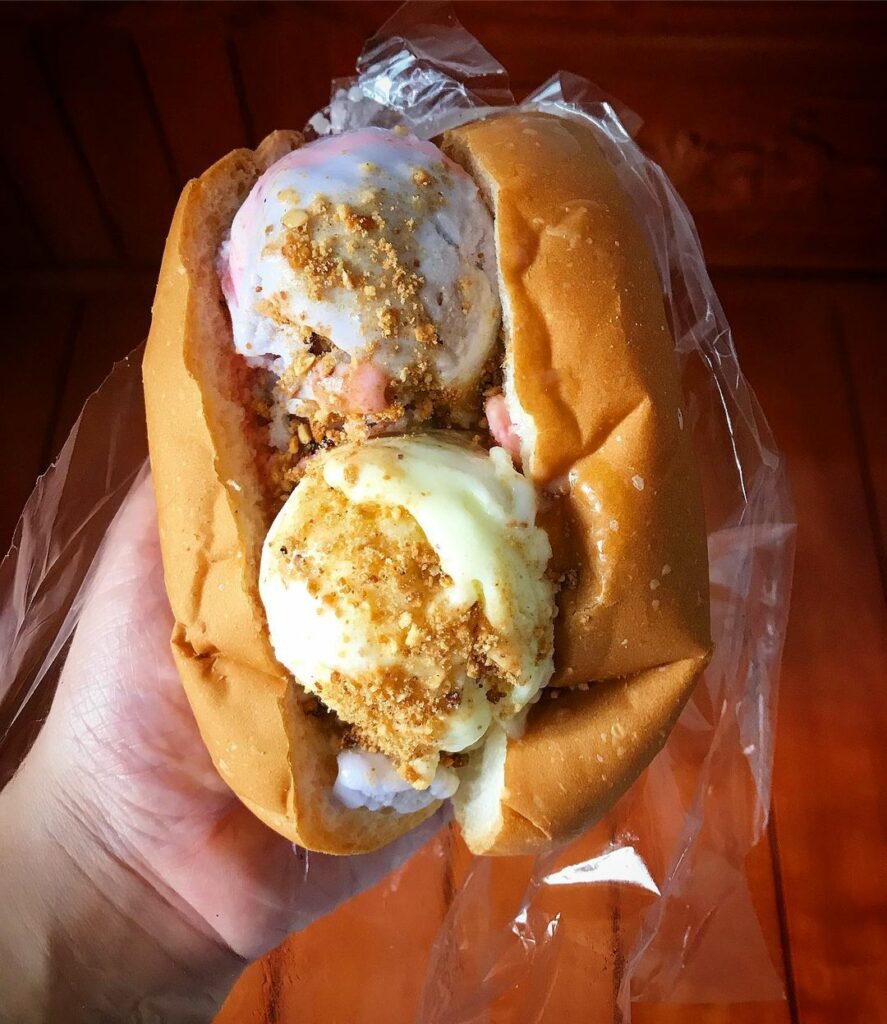
Banh mi kem is the Vietnamese version of an ice cream sandwich. It is made by filling a baguette with scoops of ice cream and toppings such as crushed peanuts and coconut flakes a little condensed milk.
Kem Xoi (Sticky Rice and Ice Cream)
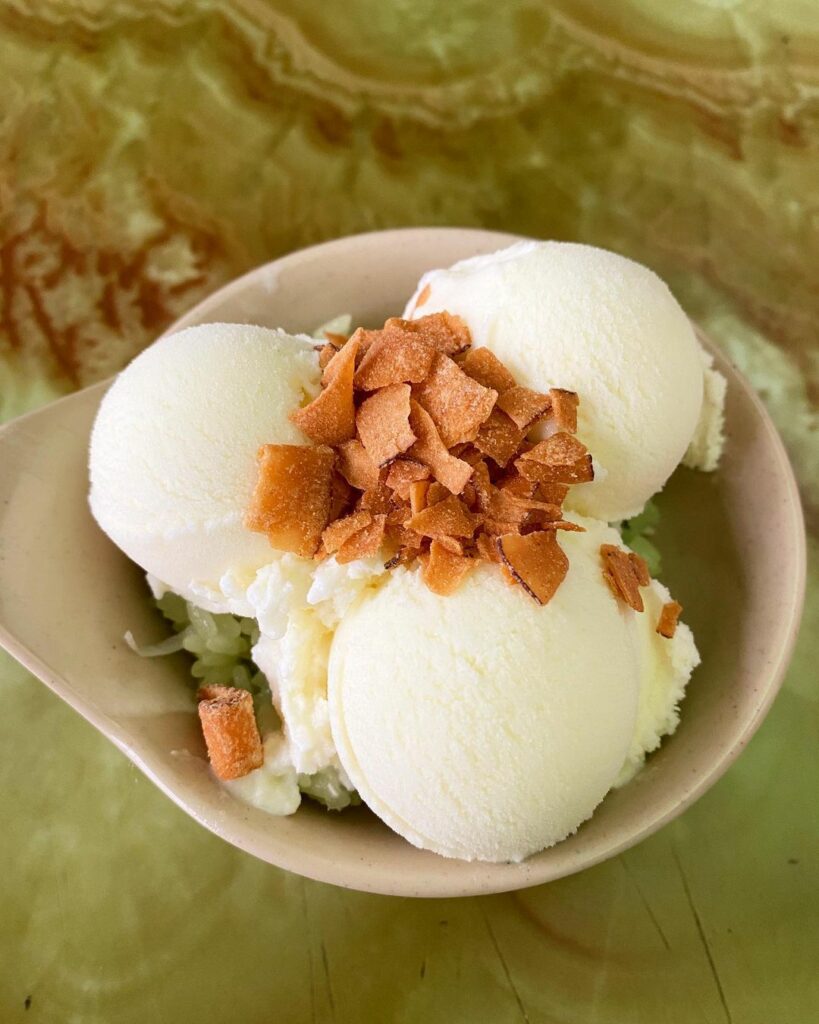
Kem Xoi is a creative combination of ice cream and sticky rice. The dessert consists of a scoop of ice cream served on a bed of sticky rice and topped with coconut milk and peanuts.
Sua Chua Mit (Mixture Yogurt with Jack Fruit)
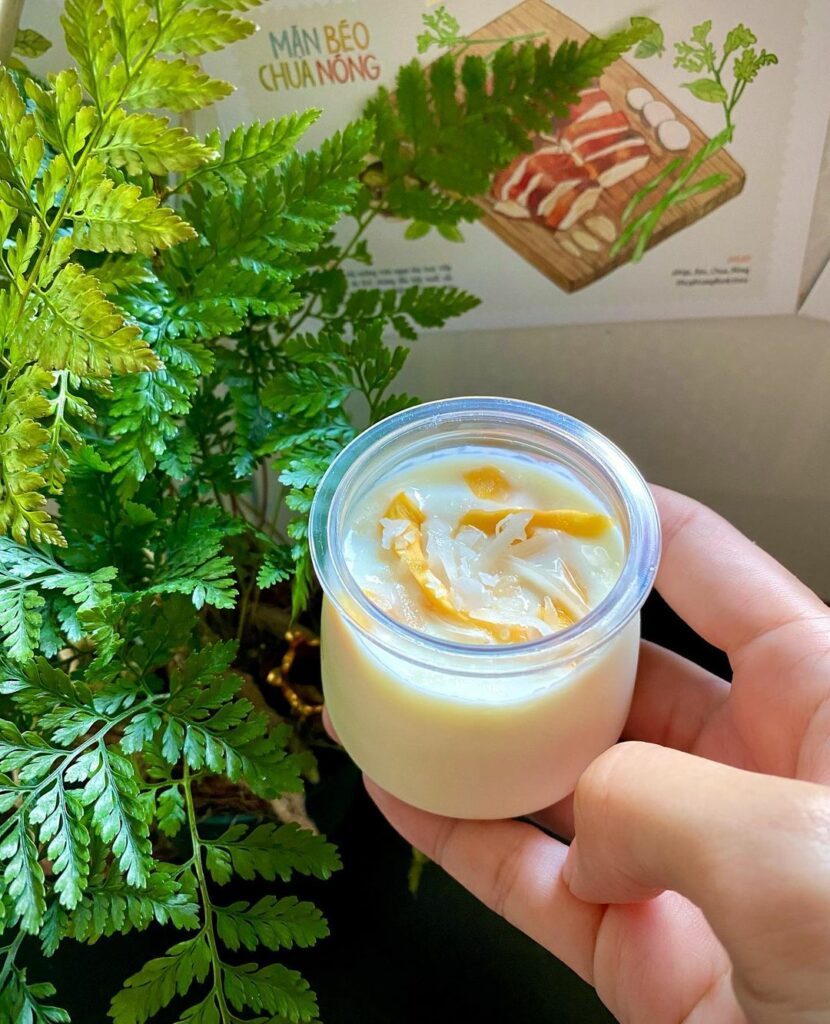
Sua Chua Mit is a Vietnamese yogurt dessert with jackfruit. It is made by combining sweetened yogurt with jackfruit, a tropical fruit with a sweet and fragrant taste.
Macarons with Vietnamese flavors
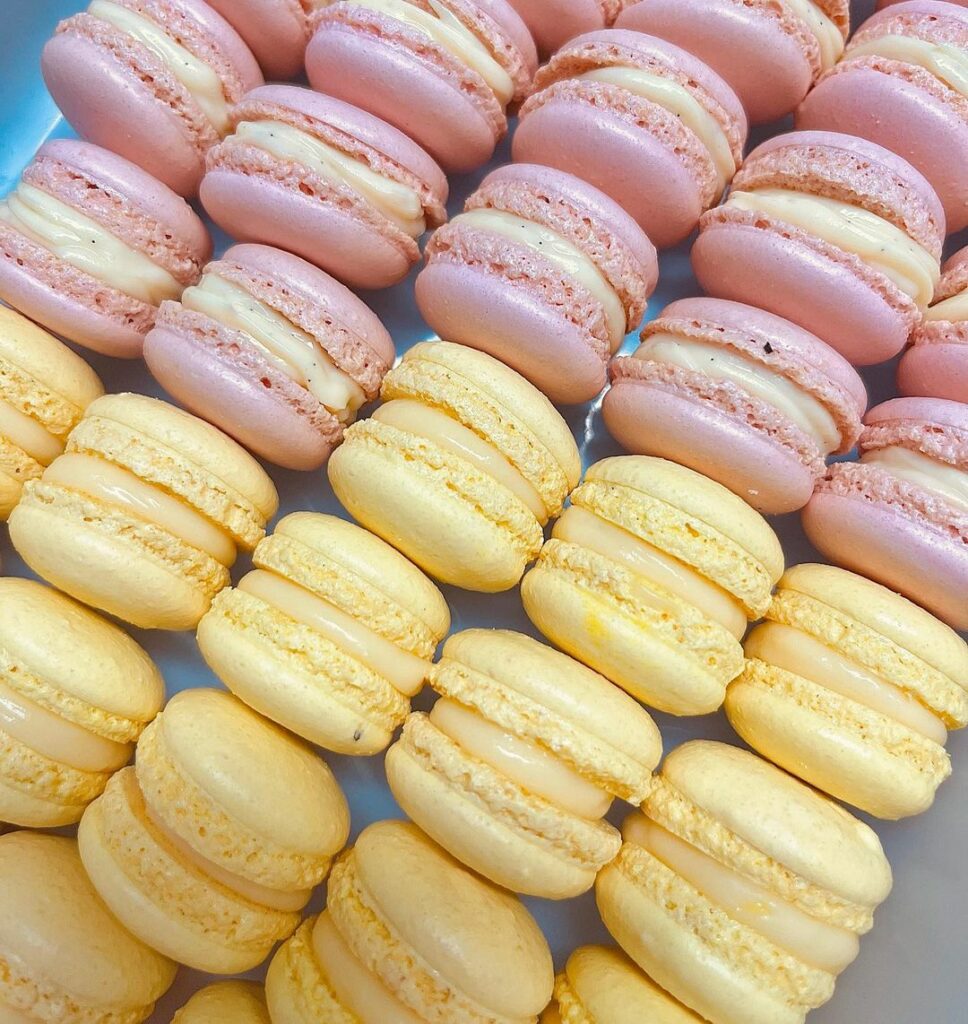
Macarons with Vietnamese flavors are a French-Vietnamese fusion dessert. They are made by adding Vietnamese flavors such as pandan, coconut, and coffee to the traditional French macaron recipe.
Matcha flan
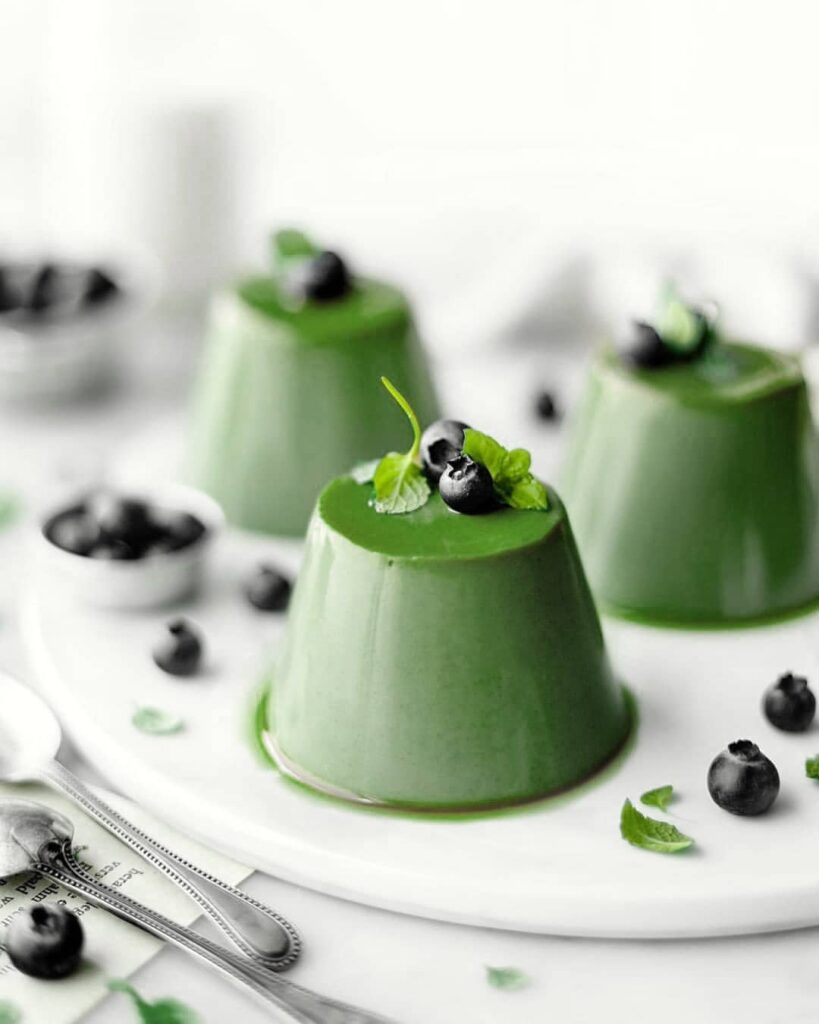
A green tea-flavored Vietnamese flan made with eggs, condensed milk, sugar, and matcha powder. It has a creamy texture with a sweet and slightly bitter taste.
Che Thap Cam (Vietnamese mixed sweet soup)
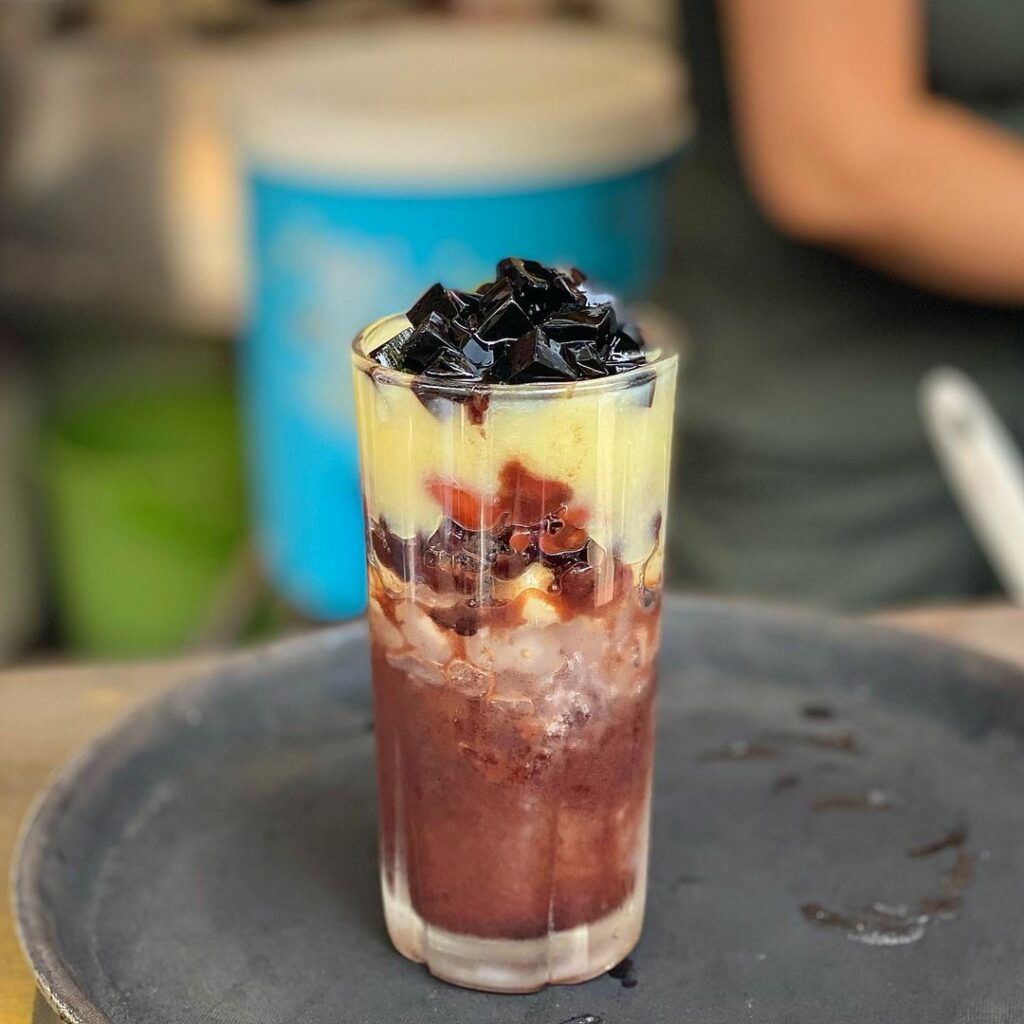
A mixed fruit and jelly dessert served in a sweet coconut milk soup. It has a refreshing and fruity taste with a creamy texture.
Che Khuc Bach (Almond Panna Cotta Lychee Dessert)
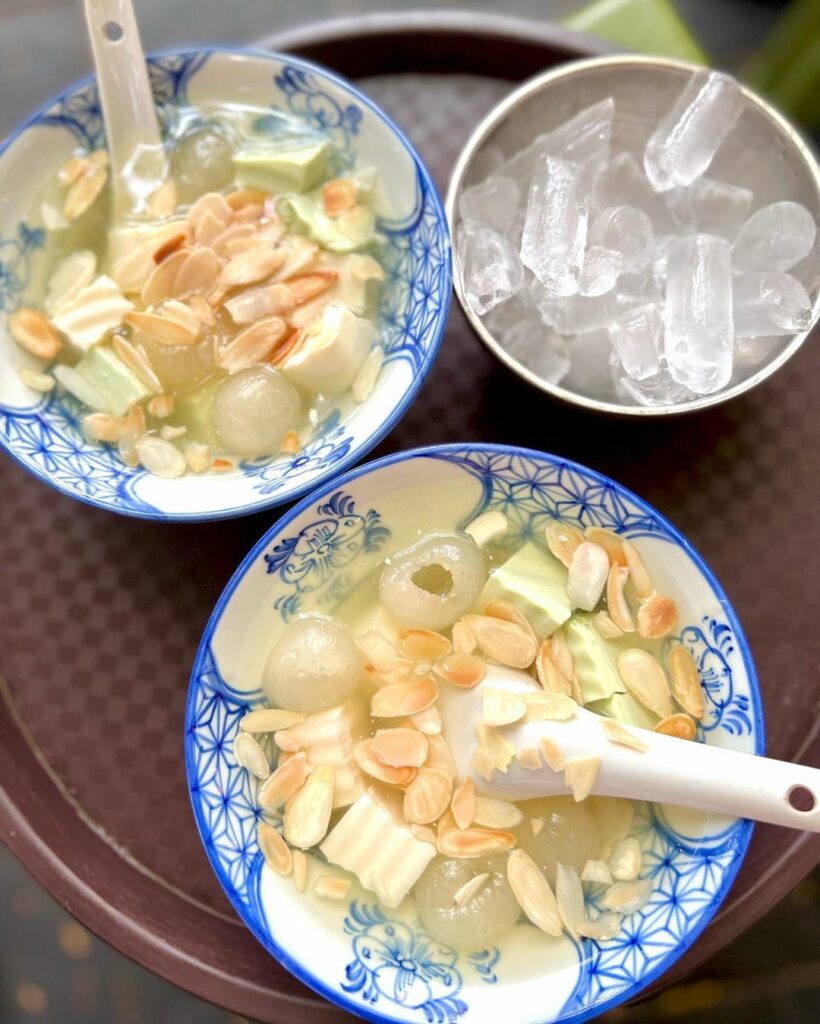
Che Khuc Bach is a vibrant Vietnamese dessert soup that is literally translated as “white chunk dessert soup.” It features flavored cubes of jellied milk, which give the dessert its distinctive appearance.
The cubes are made using gelatin and coconut milk or fresh milk. While the khúc bạch can be served as is, it is often enhanced with additional ingredients such as pandan leaves, fruit syrup, or green tea to add flavor.
The jellied milk cubes are sliced into wavy-looking pieces and then served in a simple syrup along with toasted almonds and a variety of fruits like longan, lychee, watermelon, and strawberry.
Che Khuc Bach is known for its colorful and eye-catching presentation, making it a popular and visually appealing dessert in Vietnam.
Suong Sao Hat E (Grass Jelly with Basil Seeds)
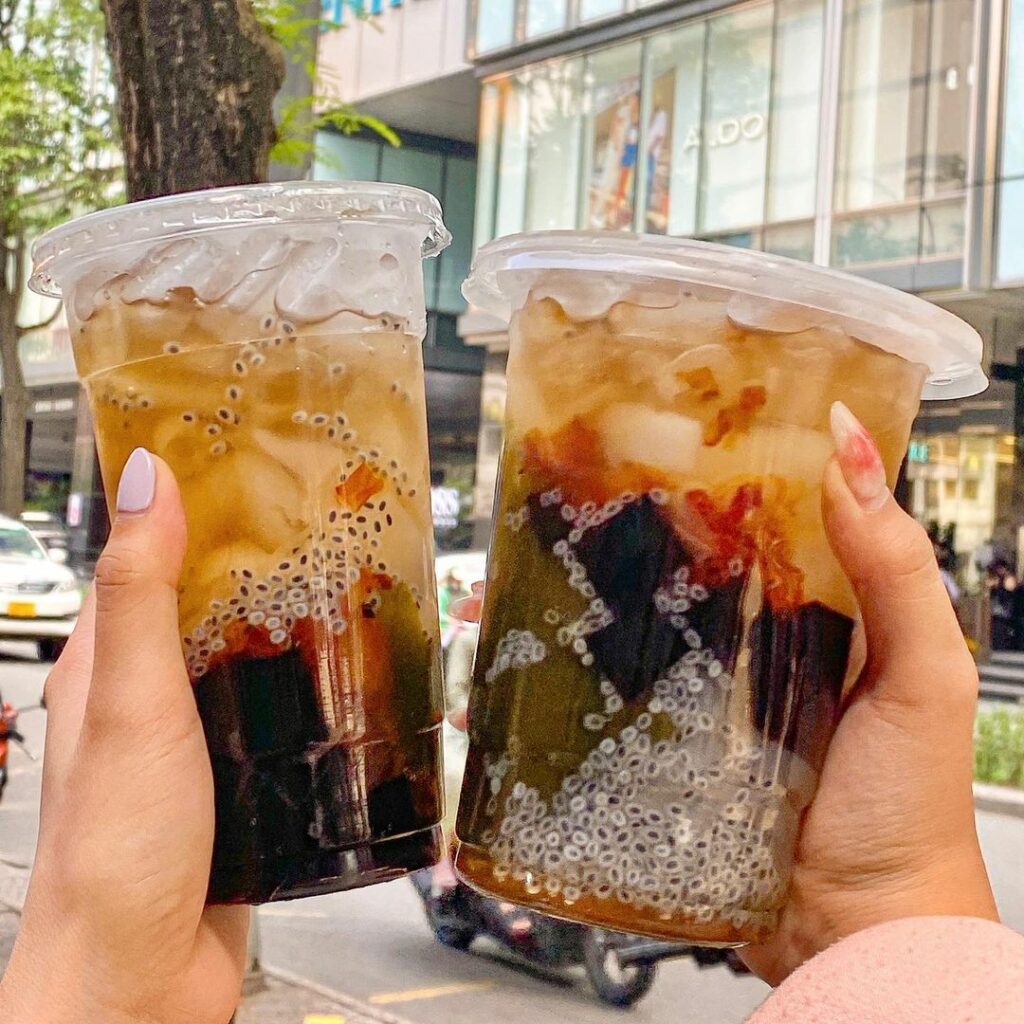
Suong Sao Hat E is a Vietnamese sweet soup consisting of grass jelly and basil seeds. In this dessert, grass jelly is cut into cubes, typically appearing black in color. Basil seeds are soaked in water for several hours until they soften before being added to the dish. The grass jelly cubes and softened basil seeds are then simmered together in water that has been sweetened with sugar cane.
Although Suong Sao Hat E may seem like a simple dessert, it offers a delightful combination of flavors that often leaves you craving for more. On hot days, it can be enjoyed with the addition of shaved ice, providing a refreshing coolness to the dessert.
Banh Bong Lan Trung Muoi (Salted Eggs Sponge Cake)
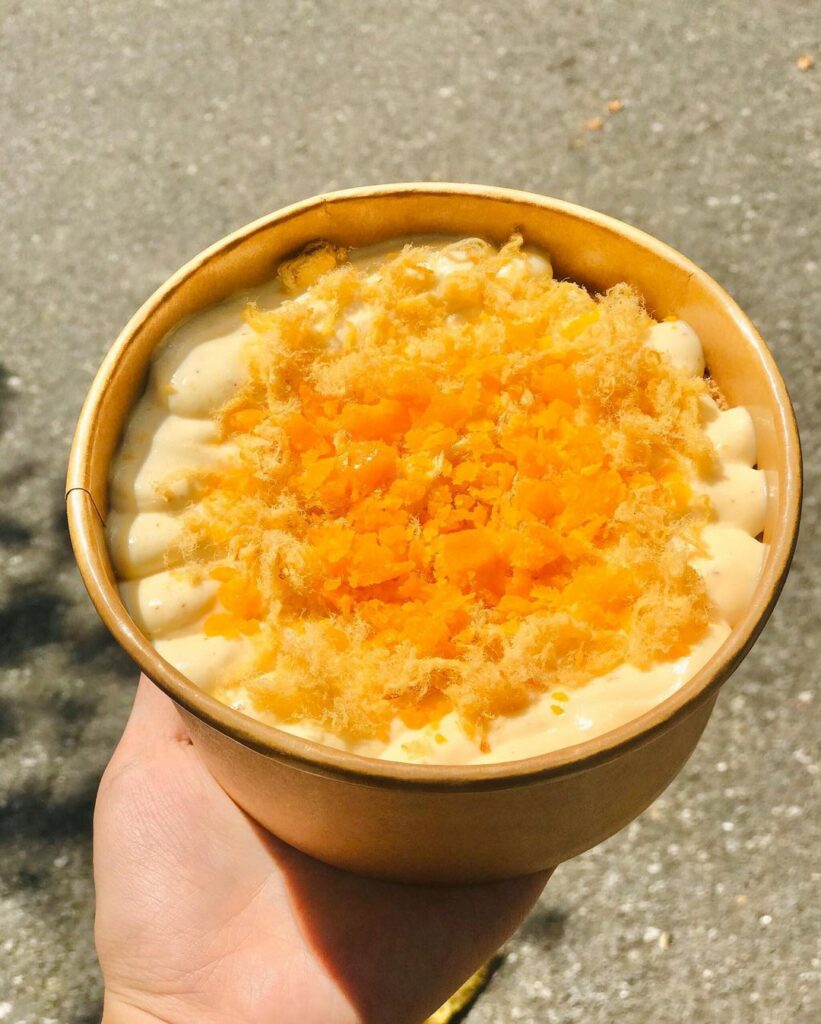
Vietnamese Salted Egg Sponge Cake is a type of cake originating from Vietnam that incorporates the use of salted eggs. It is a soft and fluffy sponge cake that is made with salted egg yolks, giving it a unique and savory twist.
The cake is typically prepared by combining salted egg yolks with ingredients such as flour, sugar, butter, and milk. The salted egg yolks add a distinct flavor and richness to the cake, balancing out the sweetness of the other ingredients. The batter is then baked until the cake rises and achieves a light and airy texture.
Pandan jelly
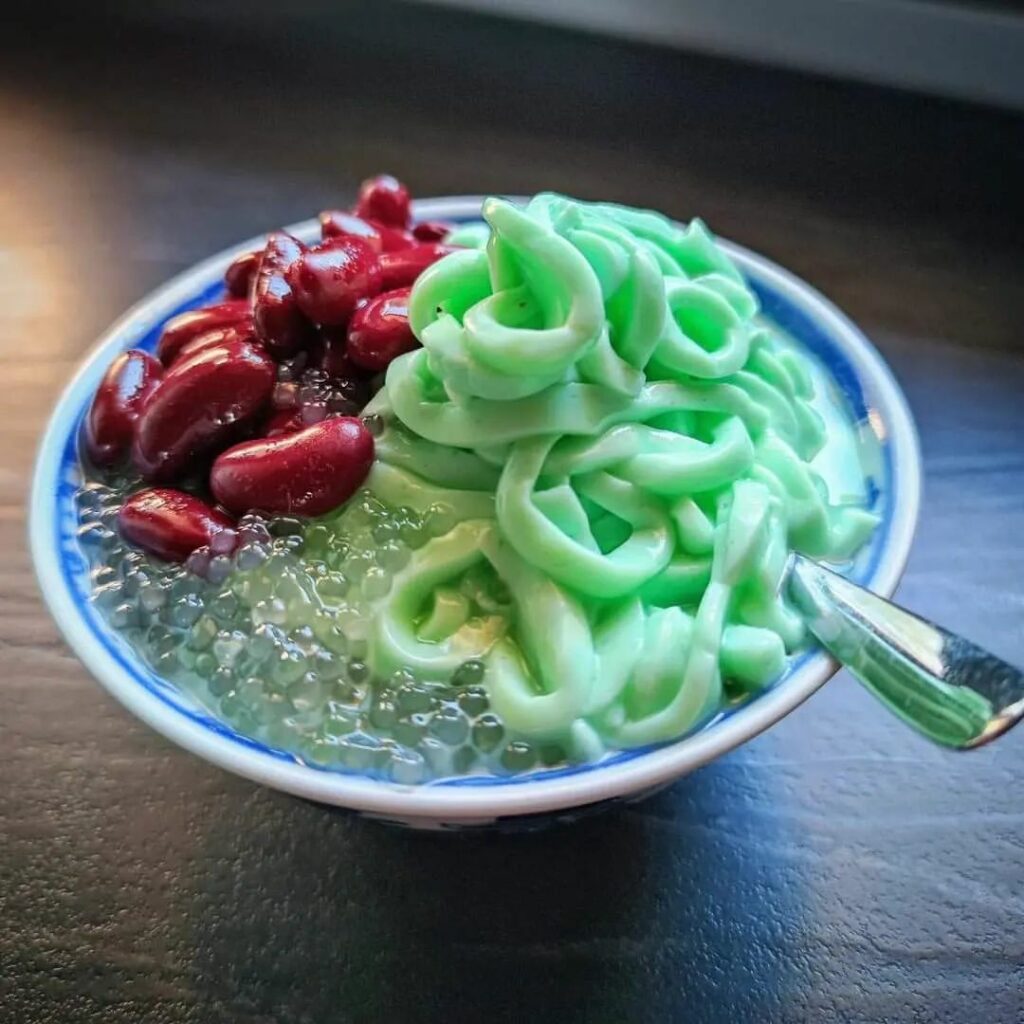
Pandan jelly is often served as a dessert after meals or as a refreshing snack on hot days. It can also be used as a topping for shaved ice or mixed with fruits to make a colorful and tasty dessert.
To make pandan jelly, the main ingredients needed are agar-agar powder, pandan leaves, sugar, water, and coconut milk. Agar-agar powder is a type of seaweed-based gelatin that is commonly used in Asian desserts. Pandan leaves are first blended with water and then strained to extract the flavor and color. What does pandan jelly taste like? The pandan juice is then mixed with sugar, water, and agar-agar powder and boiled until the powder is dissolved. Coconut milk is then added to the mixture before it is poured into a mold and chilled in the refrigerator until it sets.
These modern Vietnamese desserts offer a unique and creative twist on traditional Vietnamese ingredients, showcasing the innovation and creativity of Vietnamese cuisine.
Sua Chua Nep Cam (Vietnamese Yogurt Black Sticky Rice Pudding)
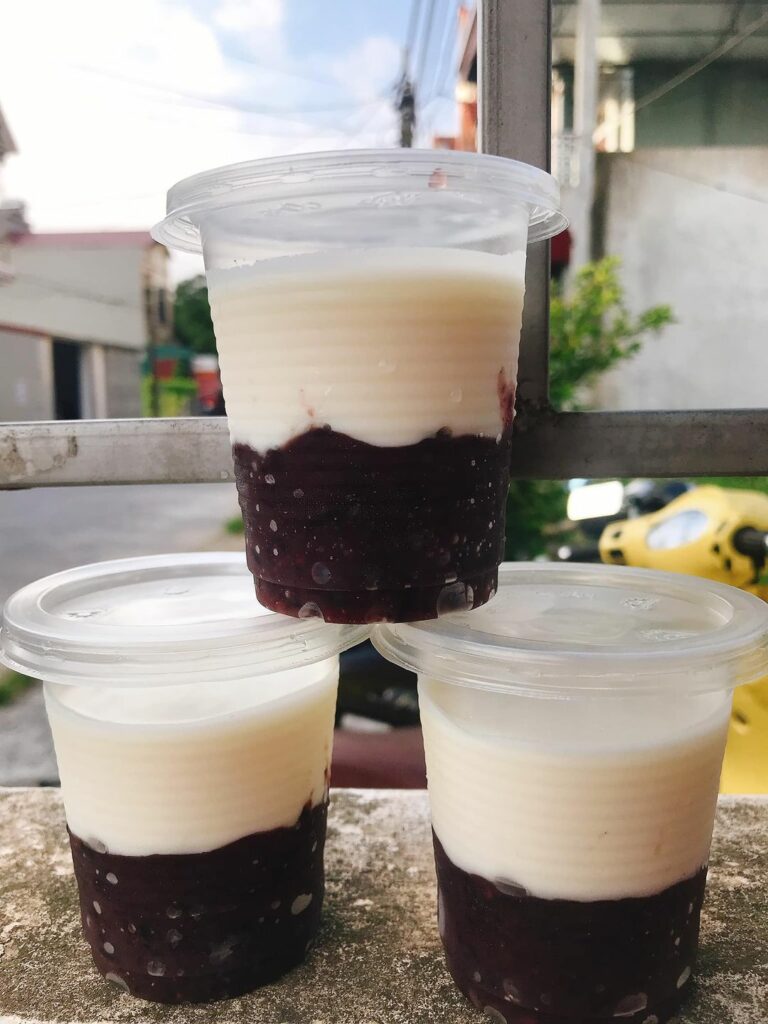
Sua Chua Nep Cam is a beloved dessert Vietnamese food that combines yogurt and black sticky rice pudding. It is enjoyed by people of all ages in Vietnam, especially during hot summer days. The dessert offers a refreshing experience as the tartness of yogurt blends with the light sweetness and richness of soft and chewy black sticky rice.
Sua Chua Nep Cam is known for its ease of preparation, delicious taste, and healthy qualities. The combination of yogurt and black sticky rice provides a cooling effect and satisfies the taste buds. The dessert is considered a delightful treat that can be enjoyed as a snack or a sweet ending to a meal.
Regional Vietnamese desserts
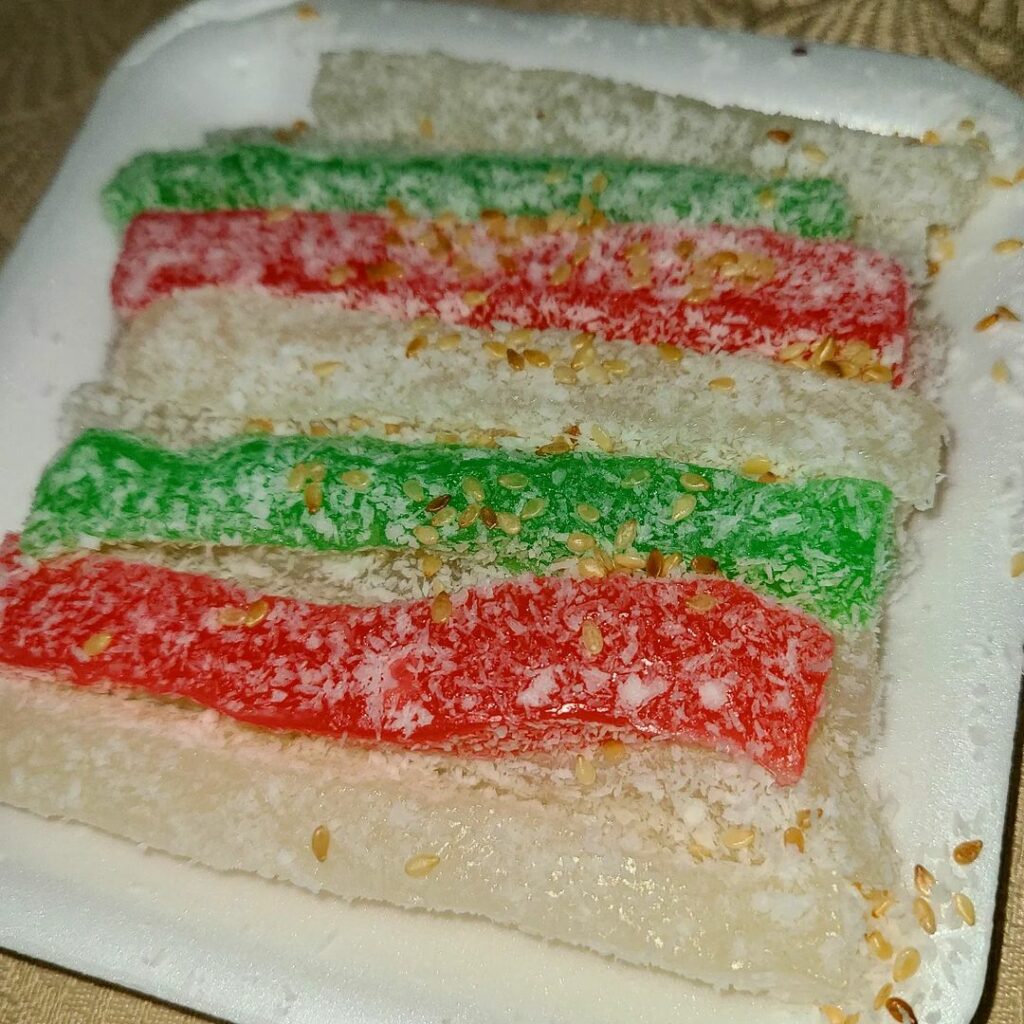
Vietnam is a country with diverse regions, each with its own unique culinary traditions and specialties. Here are some popular regional Vietnamese desserts:
Hue desserts
Hue is an ancient imperial city in central Vietnam that is known for its unique culinary traditions. Some popular Hue desserts include Banh Khoai (crispy fried pancake with shrimp and pork filling), Che Sen (lotus seed sweet soup), and Banh Ep (thin rice cracker).
Mekong Delta desserts
The Mekong Delta region is often referred to as the “rice bowl” of Vietnam, and its desserts reflect this abundance of rice and fruits. Some popular Mekong Delta desserts include Xoi La Cam (purple sticky rice), Mut Qua (preserved candied fruits), and Banh Tet Chuoi (banana sticky rice cake).
Hanoi’s desserts
Hanoi, the capital city of Vietnam, has a mix of Vietnamese and French influences in its cuisine. Some popular Hanoi desserts include Cafe Trung (egg coffee), Banh Com (green sticky rice cake), and Nem Ran (Vietnamese fried spring rolls).
Saigon’s desserts
Saigon (now known as Ho Chi Minh City) is a bustling city in southern Vietnam that has a diverse mix of culinary influences. Some popular Saigon desserts include Banh Flan (crème caramel), Che Ba Mau (three-color dessert), and Banh Trang Nuong (grilled rice paper with toppings).
These regional Vietnamese desserts offer a glimpse into the unique culinary traditions and flavors of different regions in Vietnam, showcasing the country’s diverse cultural heritage.
These regional Vietnamese desserts offer a glimpse into the unique culinary traditions and flavors of different regions in Vietnam, showcasing the country’s diverse cultural heritage.
Healthy Alternatives and Vegan Options
If you’re looking for healthier or vegan options when it comes to Vietnamese desserts, there are many alternatives available that still deliver on taste and texture. Here are some examples:
Healthier versions of traditional Vietnamese desserts
Many traditional Vietnamese desserts can be made healthier by substituting certain ingredients or cooking methods.
For example, instead of using white sugar, you can use natural sweeteners like honey or maple syrup. Instead of deep-frying, you can opt for baking or steaming. Examples of healthier Vietnamese desserts include Chia Seed Pudding, Fruit Salad with Coconut Cream, and Sweet Potato and Coconut Pudding.
Vegan-friendly Vietnamese sweets
Vietnamese cuisine has many vegan-friendly ingredients such as coconut milk, sticky rice, and tropical fruits. This makes it easy to find vegan alternatives to traditional Vietnamese desserts.
For example, you can try Vegan Banh Flan made with coconut milk and agar instead of condensed milk and gelatin. You can also try Vegan Chè made with coconut milk, tapioca pearls, and various fruits.
FAQs
Are Vietnamese desserts gluten-free?
Many Vietnamese desserts are naturally gluten-free, as they are made from ingredients like rice flour, coconut milk, and fruits. However, some Vietnamese desserts may contain wheat-based ingredients such as wheat flour or soy sauce, which may not be gluten-free.
It’s important to always check the ingredients and ask the server or chef about the preparation of the dessert to ensure it is gluten-free. Additionally, some dessert shops and restaurants may offer gluten-free versions of traditional Vietnamese desserts.
Are Vietnamese desserts typically high in sugar?
Some Vietnamese desserts can be high in sugar, especially those that use condensed milk or sweetened coconut milk as a main ingredient. However, not all Vietnamese desserts are overly sweet, and some traditional desserts use natural sweeteners like honey or fruit instead of refined sugar.
Additionally, there are many healthier and lower-sugar alternatives to traditional Vietnamese desserts that use natural ingredients and less sugar. It’s important to be mindful of sugar content and portion sizes when enjoying Vietnamese desserts, as with any sweet treat.
What are some unique Vietnamese dessert ingredients?
Vietnamese desserts are known for their unique flavors and textures, often featuring a variety of interesting and unusual ingredients. Here are some examples of unique Vietnamese dessert ingredients:
- Pandan leaves: Pandan leaves are a tropical plant that is commonly used in Vietnamese desserts for their sweet and fragrant flavor. They are often used to flavor desserts like Che and Banh or Pandan jelly.
- Mung beans: Mung beans are a type of legume that are commonly used in Vietnamese desserts for their nutty and sweet flavor. They are often used in desserts like Banh and Che.
- Lotus seeds: Lotus seeds are a type of seed that are commonly used in Vietnamese desserts for their nutty and slightly sweet flavor. They are often used in desserts like Che and Mooncakes.
- Coconut milk: Coconut milk is a common ingredient in many Vietnamese desserts, providing a creamy and rich flavor. It is often used in desserts like Che, Banh, and Kem.
- Tapioca pearls: Tapioca pearls are small, chewy balls made from tapioca starch that are often used in Vietnamese desserts for their unique texture. They are often used in desserts like Che and Kem.
These unique Vietnamese dessert ingredients add a distinct flavor and texture to traditional Vietnamese sweets, making them a delight for the taste buds.
How are Vietnamese desserts typically served?
Vietnamese desserts can be served in a variety of ways, depending on the specific dessert and the occasion. Here are some common ways that Vietnamese desserts are served:
- In individual portions: Many Vietnamese desserts are served in individual portions, either in bowls or on plates. This allows each person to enjoy their own serving of the dessert.
- Family-style: Some Vietnamese desserts, such as Che, are served family-style, with a large bowl or pot of the dessert placed in the center of the table for everyone to share.
- On special occasions: Vietnamese desserts are often served on special occasions, such as Lunar New Year, weddings, and birthdays. They may be served as part of a larger meal or as a standalone dessert.
- With toppings: Many Vietnamese desserts are served with toppings, such as fresh fruits, nuts, or coconut cream. These toppings can add texture and flavor to the dessert.
- Cold or hot: Depending on the dessert, it may be served cold or hot. For example, Che is often served cold, while Banh Chuoi Hap is served hot.
How long do Vietnamese desserts typically last?
The shelf life of Vietnamese desserts can vary depending on the specific dessert and how it is stored. Some Vietnamese desserts, such as Che or Banh, are best enjoyed fresh and do not keep well for long periods of time.
Others, like Mooncakes or dried fruits, can be stored for several weeks or even months. It’s important to follow specific storage instructions for each dessert and to be mindful of expiration dates. In general, Vietnamese desserts should be stored in a cool, dry place and consumed within a few days to ensure the best quality and freshness.
Can Vietnamese desserts be frozen and reheated?
Some Vietnamese desserts can be frozen and reheated, while others may not hold up as well after being frozen. Desserts with a high moisture content, such as sweet soups and puddings, may become grainy or separated after being frozen and reheated.
However, desserts like cakes, pastries, and certain types of banh may be suitable for freezing and reheating. It’s best to check the specific dessert recipe or ask the chef or baker for recommendations on how to store and reheat the dessert. Additionally, some Vietnamese desserts may be best enjoyed fresh and may not require freezing or reheating at all.
What prices do Vietnamese desserts fluctuate?
The price of Vietnamese desserts can vary depending on several factors such as the type of dessert, the location where it is sold, and the quality of the ingredients used. Traditional Vietnamese desserts sold at local markets or street vendors tend to be more affordable, with prices ranging from a few cents to a few dollars per serving.
In contrast, desserts served at high-end restaurants or specialty dessert shops may be more expensive due to the use of premium ingredients and the additional labor required for presentation. Vietnamese dessert prices can fluctuate greatly depending on where and how they are sold, but there are options available at a variety of price points.
What is the difference between Vietnamese and other Asian desserts?
Vietnamese desserts are distinct from other Asian desserts in several ways. While other Asian desserts may be more heavily influenced by Chinese or Japanese cuisine, Vietnamese desserts are influenced by a variety of cultural and historical factors unique to Vietnam.
Vietnamese desserts often feature a combination of sweet and savory flavors, such as in Che and Banh, which is a contrast to the predominantly sweet flavor profiles of other Asian desserts. Additionally, Vietnamese desserts tend to use ingredients that are native to the region, such as coconut milk, mung beans, and pandan leaves.
Vietnamese desserts also focus on fresh and natural ingredients, rather than artificial flavorings or colors. Finally, the presentation of Vietnamese desserts often emphasizes simplicity and understated elegance, with an emphasis on showcasing the natural beauty and flavors of the ingredients.
Conclusion
Finally, Vietnamese desserts are a delightful and integral part of the country’s culinary heritage, offering a range of flavors, textures, and cultural significance. From traditional sweet soups and pastries to modern twists on classic flavors, Vietnamese desserts are a delicious way to explore the country’s cuisine and culture. Whether you are in Vietnam or trying Vietnamese desserts in other parts of the world, these sweet treats are sure to leave a lasting impression on your taste buds.